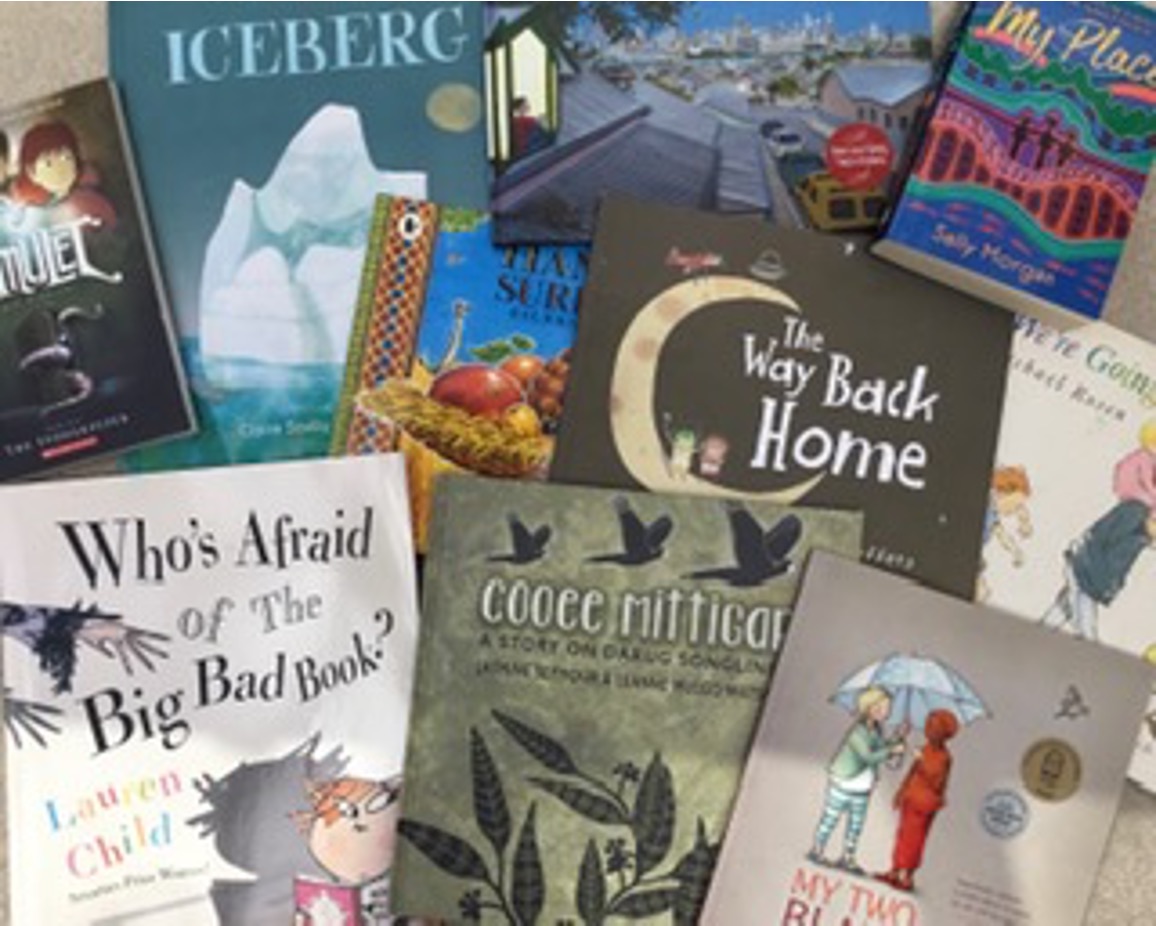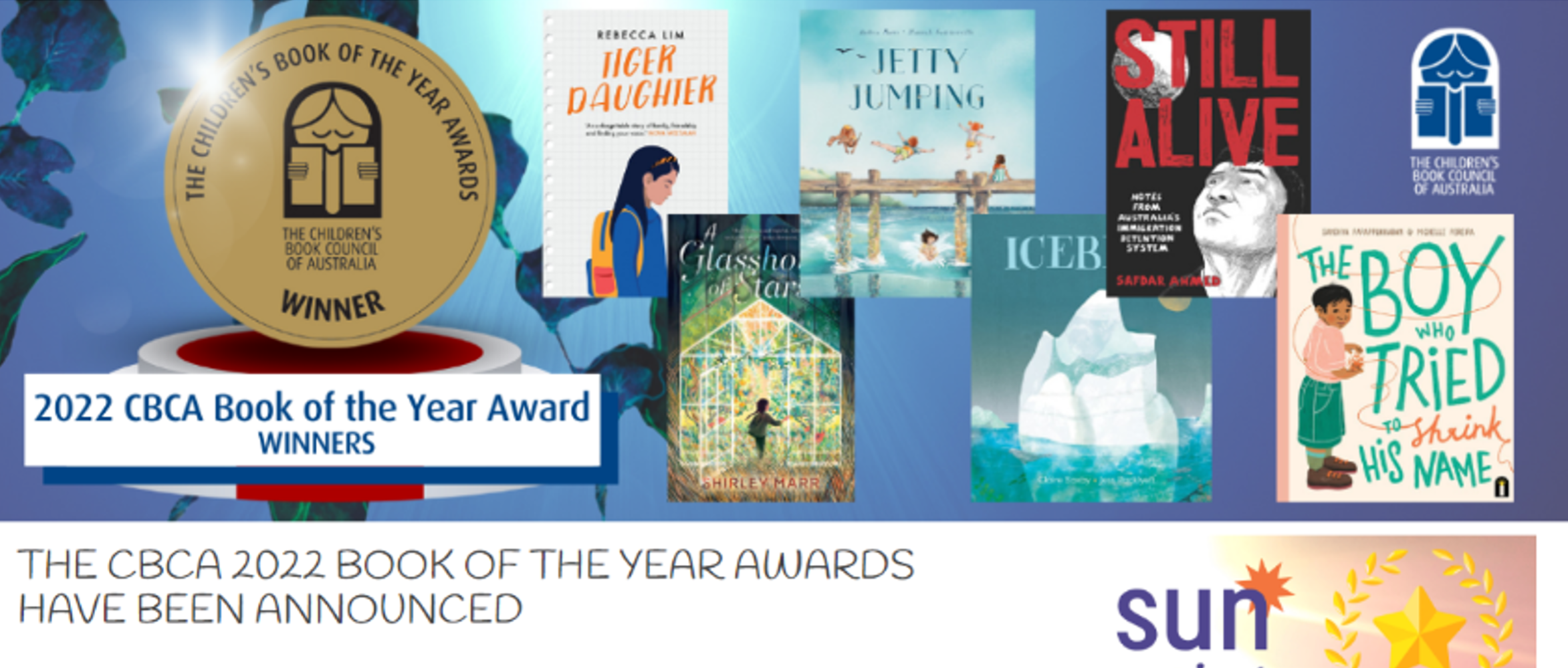EVERYTHING you need to know about Book Week is at the CBCA website with the list of all the winners and Honour books for 2022 (and previous years too).
As well, PETAA (Primary English Teaching Association Australia) has Children’s Book Council of Australia (CBCA) guides, and there is a link to teaching units of work for the winning, honours, and shortlisted books in categories focused on primary-aged readers.
Accessing texts for all students
This is the week you introduce reading at least six (yes, 6) pieces of text to and with your students every day.
Your reading is the advertisement for why and how reading is important. This way, every student is included in the learning and pleasure of text. The good readers in your class can follow up and read for themselves. The students who are still learning get to hear what all the fuss is all about and to share fully in the work of making meaning.
AND you get to dress up!
Value of reading aloud – more than just reading for pleasure
Reading aloud to our students is a demonstration of skilled reading. It demonstrates what engagement with a fictional text is and exploring the power of words that authors uses. It can be like being transported to a new world, confronting issues together, thinking deeply, solving problems, and just relishing beautiful writing.
Reading aloud is also a demonstration of the enormous range of factual information that there is to find out about – the natural world, the built environment, people’s lives, machines and inventions, places and real-life adventures.
We have to be readers too
We are always on the lookout for the best books to read to our students. The trick is to have a stock of books we enjoy reading, that we know work with students, and that we build on. The CBCA Book Week awards really help.
It means we have to read for ourselves, probably a couple of books every week that we might want to try out in the classroom. We have to be on friendly terms with both the school and town librarians, and make friends with the local book-sellers.
There is no substitute for reading books aloud to ourselves before reading to students. Then we know if there are any issues with the way sentences are put together, tricky topics that come up, inappropriate language or terminology. The base line is, if it is hard to read aloud to yourself, it will be even harder with an audience.
The ‘reading’ kitbag
Every teacher needs several really reliable books that we know carry the interest of students. The stock of ‘reliables’ for all can include:
- Picture books for all ages. Avoid the ones that everyone else is reading – or studying – and have some original material.
- Novels with clearly defined chapters that are long enough for an end of afternoon classroom read, and leave the listener wanting more. These guarantee ongoing interest. Find the ones that suit you.
- Novels that are able to be extended into various support activities, to inform and guide the reader’s understanding of what is happening and how the author has crafted to text. When a book includes a map, students can each make their own version, and track the characters, adding more information each reading.
- Factual texts that lead to further investigations – these can be noted during reading, immediately dealt with through websites, and followed up by students for themselves.
- Multimodal texts that are both literary and factual. Try to avoid film adaptations of classics before reading the text. Students can develop their own imagery first, and compare with the film later.
- Texts across the KLAs demonstrate the many we apply developing reading skills to the wide range of texts that are available.
Opportunities to listen, read and view texts, repeatedly, for different purposes, develop the skills of using visual and other representations to make meaning; they help to develop awareness of fluency, and the importance of adjusting the rate of reading as necessary.
All the while keeping the focus on the model of reading that we are providing.
Before we read
The ‘best’ books are those that give everyone some pleasure
- The text has to be comfortable to read aloud while you keep your eye on the students.
- Texts have to be a bit of a challenge for students – they should take them to ideas, vocabulary and considerations that may be new. This isn’t just the problems and issues of life – annoying siblings, family break-ups and so on, but rather with the importance of truth-telling, of honesty, of dealing with competing demands and expectations, of being courageous.

- Other people’s recommendations are helpful as a starting point.
- The ‘classics’ have universal themes, have been read thousands of times, and deal with big and tricky issues. They are worth investigating.
Basically, through modelling, read aloud-teaches the how of interacting with a text and the why of making meaning from texts.
Read-aloud increases receptive and expressive vocabulary, improves fluency, strengthens comprehension and increases motivation to read
Burkins & Yaris 2015 p. 34
Happy Book Week!
References:
Burkins, J. & Yaris, K. (2016) Who’s doing the work? : how to say less so your readers can do more Portland Maine: Stenhouse






